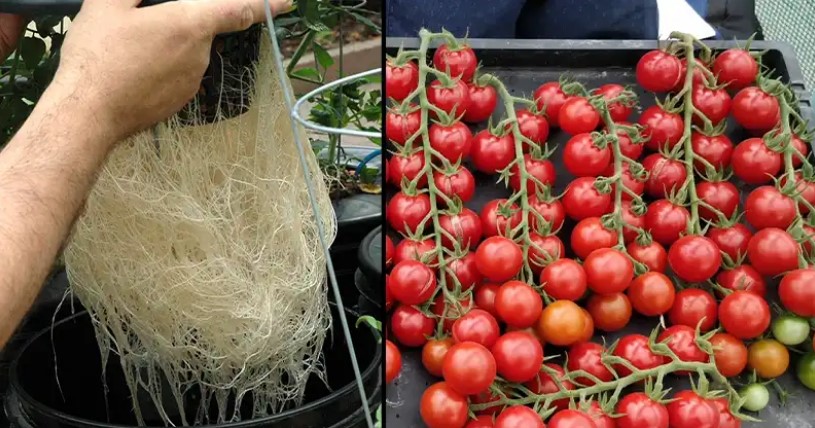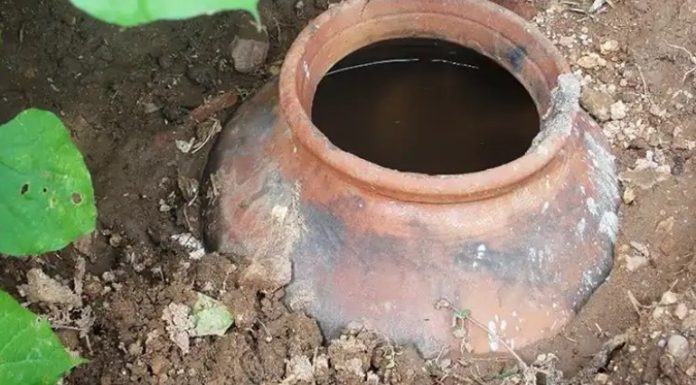Tomatoes are a popular and versatile vegetable in the culinary world, used in a variety of dishes from salads to sauces. While traditionally grown in soil, you can also successfully cultivate tomatoes without soil, using hydroponics or other soilless growing methods. In this article, we will explore how to grow tomatoes without soil , offering a comprehensive guide for both beginners and experienced gardeners.
Advantages of Soilless Tomato Cultivation
Before delving into the specifics of growing tomatoes without soil, it’s important to understand the advantages of this approach:
- Better Control: Soilless growing allows for precise control of nutrient intake, pH levels, and environmental conditions. This leads to healthier plants and higher yields.
- Reduced Pest and Disease Risk: Soilless systems are less susceptible to soil-borne pests and diseases, providing a more hygienic growing environment.
- Space Efficiency: Hydroponic or soilless systems can be set up in limited spaces, making them suitable for urban gardeners or those with small gardens.
- Faster Growth: Soilless systems often lead to faster growth and earlier harvests, as the plants receive nutrients directly through their roots.
Now, let’s dive into the steps to grow tomatoes without soil.
1. Choose the Tomato Varieties
Select tomato varieties that are well-suited to hydroponic or soilless growing. Indeterminate varieties, such as Cherry, Beefsteak, or Roma tomatoes , are popular choices. Ensure you choose disease-resistant varieties to minimize risks.
2. Hydroponic Systems
There are various hydroponic systems to choose from. The most common ones for growing tomatoes include:
- Deep Water Culture (DWC): In this system, tomato plants are suspended in a nutrient-rich water solution, with their roots submerged.
- Nutrient Film Technique (NFT): This system involves a continuous flow of nutrient solution over a sloped, narrow channel where the tomato plants’ roots dangle.
- Drip System: Drip systems provide a controlled release of nutrient solution to the plants’ root zones through a network of tubes and emitters.
3. Choose a Growing Medium
While hydroponic systems don’t use soil, they do require a growing medium to support the plants and provide stability. Common choices include:
- Coconut coir
- Perlite
- Rockwool
- Hydroton (expanded clay pellets)
Select a medium that retains moisture while allowing for good aeration and root support.
4. Maintain Proper Nutrient Solutions
In hydroponic systems, essential nutrients are supplied to the plants via nutrient solutions. These solutions typically contain macronutrients like nitrogen, phosphorus, and potassium , as well as micronutrients. Monitor the nutrient solution’s pH level (typically around 5.5 to 6.5 ) and adjust as needed to ensure optimal nutrient uptake.
5. Provide Adequate Light
Tomatoes require ample light to thrive. If you’re growing them indoors, invest in high-quality LED grow lights that provide the necessary spectrum for plant growth. The recommended light cycle is usually 14-16 hours per day.
6. Maintain Proper Temperature and Humidity
Tomatoes thrive in temperatures between 70-75°F (21-24°C) during the day and slightly cooler at night. Humidity levels should be around 70% during the seedling stage and gradually reduced as the plants mature.
7. Pruning and Support
As your tomato plants grow, they may become top-heavy. To ensure proper support, use trellises, stakes, or tomato cages . Prune your plants regularly to remove lower leaves and encourage the growth of upper fruit-bearing branches.
8. Pest and Disease Management
Although hydroponic systems reduce the risk of soil-borne pests and diseases, you should still be vigilant. Keep your growing area clean, monitor for common tomato pests, and apply appropriate treatments if necessary.
9. Pollination
Tomato plants may require manual pollination in a hydroponic system, as the absence of wind and insects can hinder natural pollination. Gently shake the plants or use a small brush to transfer pollen between flowers.
10. Harvesting
When your tomatoes reach their desired ripeness, gently pick them from the vine. Be careful not to damage the plant in the process.
Growing tomatoes without soil is a rewarding endeavor that can yield bountiful and healthy crops. With the right choice of tomato varieties, a suitable hydroponic system, and careful attention to environmental factors, you can enjoy delicious, homegrown tomatoes year-round. Whether you’re an urban gardener or simply looking to experiment with new growing methods, soilless tomato cultivation is an exciting and sustainable way to grow this beloved fruit.










